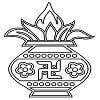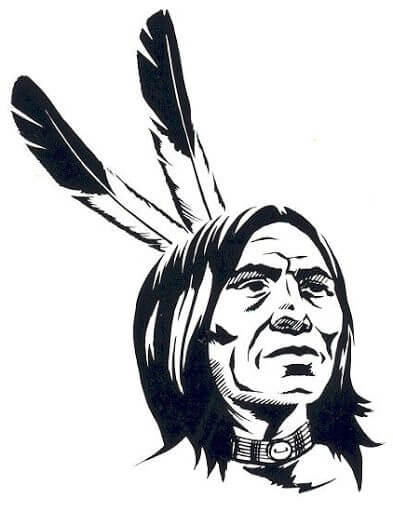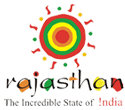- Home
- Holiday Ideas
-
-
- Choose Your Traveling Theme
-
- Adventure Tourism
-
- Cultural Tourism
-
- Tour Packages
-
-
- Packages by State
-
- Holidays by Interest
-
- Popular Tour Packages
-
- Fair And Festivals
-
- Ayurveda And Yoga
-
- Offers
-
- Destinations
-
East Indian Wedding Traditions
East Indian Wedding Traditions
Hindu weddings are ceremonial feasts laden with symbolic rites and rituals. Despite India’s diversities in language, culture, food and lifestyle, one can observe common threads in many Hindu weddings across the state. The East Indian wedding traditions mainly include the wedding traditions of West Bengal, Orissa, Assam and other northeastern states of India.
Bengali wedding ceremonies contains simple but meaningful rituals. There are many interesting Bengali wedding traditions and customs, which enable close friends and relatives to return together and share joyous moments while celebrating the union of two souls.
When the wedding procession of the groom arrives at the doorway of the bride’s residence, all of them are given a hearty welcome with fresh flowers. The Baran Dala is touched to the groom’s forehead by an elderly sister of the bride, then to the bottom. This gesture stands for some of blessing. Then, the groom is obtainable sweets and sherbet because the groom gets into the bride’s house or wedding venue, rosewater is sprinkled on him. The Shubho Drishti ritual is performed when the bride and groom first check out one another.
The Mala Badal ceremony is that the exchange of flower garlands between the bride and groom alongside the chants of mantras. As a neighborhood of Saat Paak ritual, the bride has got to sit on a coffee wooden stool called Pidi that’s lifted by her brothers. Then, the girl is taken round the groom seven times in a circle, which symbolizes their union. During the Sampradhan ritual, the bride’s responsibility is given to the groom by her paternal or maternal uncle. After this, the Saptapadi ritual takes place.
The Basar Ghar ceremony is a custom during which the newlyweds are given a warm welcome within the bride’s house and are served a tasty dinner. During the Bashi Biye ritual, subsequent morning after the marriage, the groom applies vermilion on his wife’s forehead. Then the newly marriage visits the Mandap, and worship the Sun God.
During the Bidaai Ceremony the newlyweds leave for his or her home, after being blessed by all the elders. The Bou Baran ritual is performed to offer an affectionate welcome to the newlyweds within the groom’s house. The wife of the groom’s elder brother carries a plate containing Alta and milk and places it under the bride’s feet. The bride then has got to enter the house escorted by her sister-in-law. The imprints of her feet on the ground of the house are preserved for a short time. She also receives blessings by all the members of the house. Within the Bou Bhat ceremony, the bride serves the members of the house and eats her first meal in her husband’s house. A reception party hosted by the groom’s family mostly takes place within the evening.
Assamese wedding is straightforward but chic at an equivalent time. The melody of the gentle wedding song ‘biya naam” features the exclusivity of the marriage. The marriage day begins with the performance of the washing custom. The bride and groom’s mother visit the nearby river with a vessel and collect water. This water is afterwards used for the ceremonial bath of the bride and groom, which takes place in their respective houses.
In the Assamese community, the wedding reception party is held before the marriage ceremony when delicious food is served to the guests. Fish and meat are the most food items of the marriage reception menu. After the arrival of the groom, the bride’s family indulges in fun time activities. The bridegroom’s marriage procession isn’t allowed to enter the bride’s home, until they pay an outsized sum of cas .
During the marriage ceremony the bride’s mother welcomes her future son-in-law and therefore the bride’s younger sister washes the groom’s feet. Then, the bride’s brother lifts him up and takes him to the wedding hall. During a traditional Assamese wedding, the bridegroom dresses up in dhoti and kurta, with a silk shawl wrapped crosswise on his shoulder. The bride is given Panch-Amrit that’s a mix of ghee, curd, sugar, honey and milk to eat. Then the bride makes a grand entry on the shoulders of her maternal uncles.
The wedding ceremony takes place ahead of the holy fire. The couple exchanges their flower garlands and takes vows amid the chanting of mantras. Conch shells are blown which mark the celebration. The bridegroom applies vermillion on his wife’s forehead. Afterwards the buddies and relatives bless the newlyweds. The newly marriage then goes to their house, where they’re received warmly and therefore the bridegroom’s mother performs the normal Aarti.
Oriya wedding ceremonies are relatively an equivalent as other Hindu weddings, with some minor difference within the customs and traditions. An exceptional feature about the Oriya wedding is that the mother of the bridegroom doesn’t participate in it. During the Kanya Daan ceremony, the bride’s father gives his daughter’s hand to the bridegroom and he successively promises that he will look out of her. Within the Haatha Ghanti Custom the bride and therefore the groom take seven rounds round the sacred fire, alongside the mantra of mantras and shlokas.
WANT TO RENT A CAR IN INDIA ?
Choose Your Traveling Theme
















